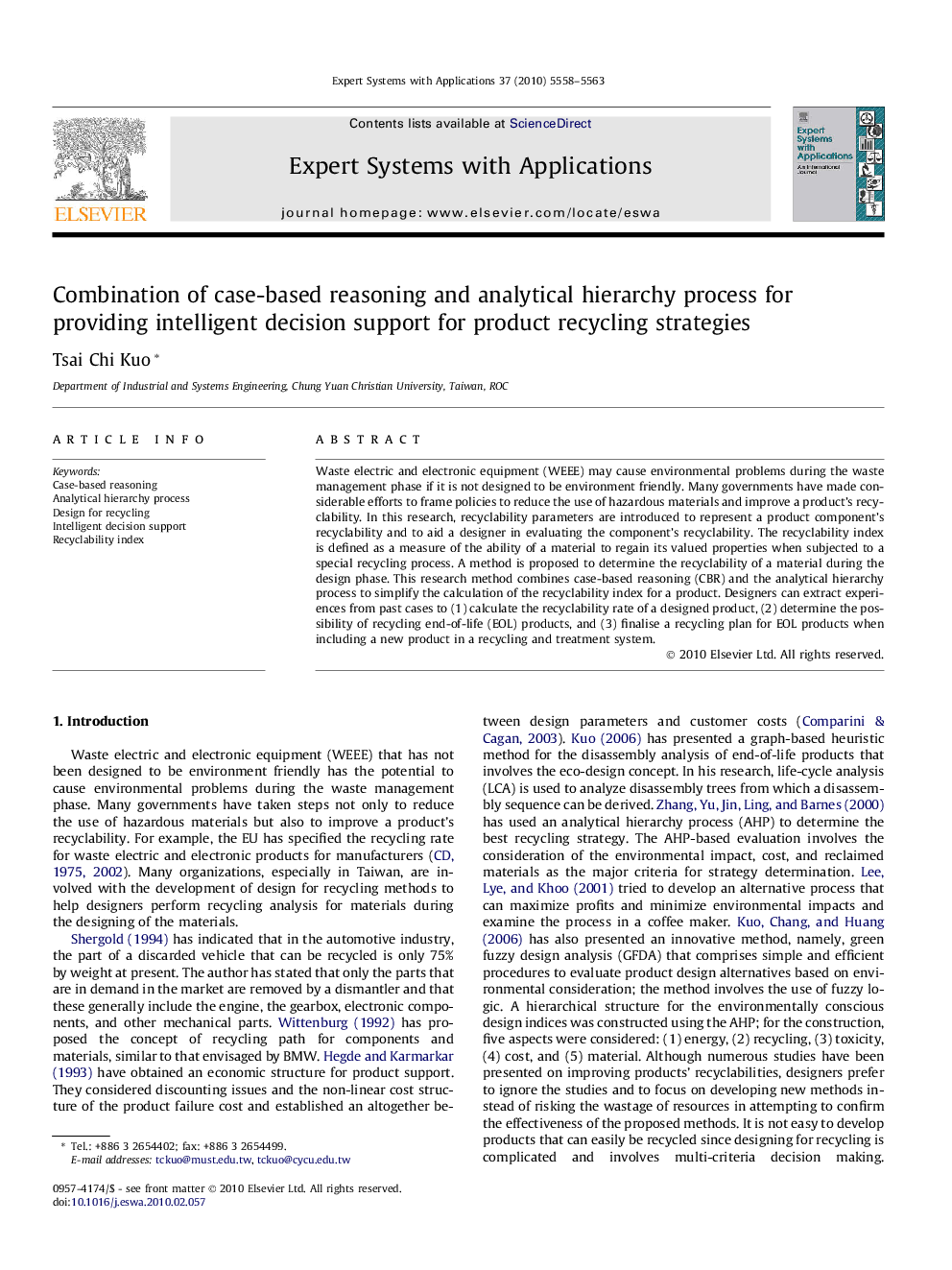| Article ID | Journal | Published Year | Pages | File Type |
|---|---|---|---|---|
| 386047 | Expert Systems with Applications | 2010 | 6 Pages |
Waste electric and electronic equipment (WEEE) may cause environmental problems during the waste management phase if it is not designed to be environment friendly. Many governments have made considerable efforts to frame policies to reduce the use of hazardous materials and improve a product’s recyclability. In this research, recyclability parameters are introduced to represent a product component’s recyclability and to aid a designer in evaluating the component’s recyclability. The recyclability index is defined as a measure of the ability of a material to regain its valued properties when subjected to a special recycling process. A method is proposed to determine the recyclability of a material during the design phase. This research method combines case-based reasoning (CBR) and the analytical hierarchy process to simplify the calculation of the recyclability index for a product. Designers can extract experiences from past cases to (1) calculate the recyclability rate of a designed product, (2) determine the possibility of recycling end-of-life (EOL) products, and (3) finalise a recycling plan for EOL products when including a new product in a recycling and treatment system.
